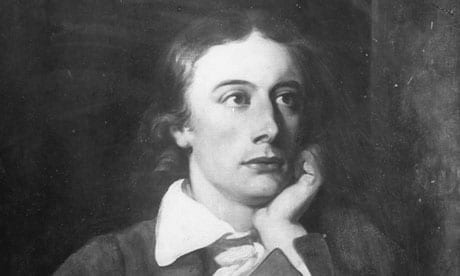For this week’s ‘Poem of the Week’, I’m taking it right back to Keats in the early 19th century and his breathtaking medieval love story of Madeline and Porphyro. Older poetry can often seem daunting at first glance, however Keats’ language and imagery have timeless beauty and ‘The Eve of St Agnus,’ when put in context, can be seen as as shocking and controversial as some contemporary poems written today. As a Romanticist, Keats was attempting to fight back at the constraints of the conventional Classicism that fuelled the poetry of the time. Keats begins by describing the things he feels are unnecessary to his life; he ridicules Orthodox Catholicism by exposing its materialistic and immoral method of paying your way into God’s kingdom and through the image of the frosty, unwelcoming chapel, and he mocks the aristocracy for their decadent and snobbish lifestyle of “snarling trumpets”— opinions verging on outrageous in the early 1800s.
The physical but also spiritual beauty of Madeline contrasts greatly to this image. Keats gives her an almost dreamlike quality compared to the cold castle she lives in and her rowdy, cruel family. Porphyro, our ‘hero’, is depicted as brave and filled with passion in his quest to rescue her, and where Madeline is often described with reference to silver and “lily white”, he is associated with reds and “purple riot”.
From a feminist reading of the text, the poem can be seen as yet another outrageous example of a weak and distressed girl, yearning to be swept away by her handsome, strong, male lover. There are even suggestions that the pair’s union in stanza 36 is in fact a scene of rape. However, I would like to think there is more to the story than just this. At points, Keats seems to suggest that Madeline in fact holds the power and control over her own fate and her lover, Porphyro. In stanza 26, she is described as “like a mermaid,” and the reference to a “charm” brings to mind the power of Medusa from Ancient Greek mythology. In stanzas 30 and 31, Porphyro seems to worship her almost like a goddess, bringing her offerings of exotic foods in a state of entrancement and awe. Keats’ descriptions of Madeline seem reverent and respectful, and it is Madeline who is shocked at the sight of the real Porphyro, who doesn’t seem to live up to the Porphyro of her dreams, suggesting women are not the only victims of unreasonable expectations imposed on them by the eye of society.
At the end of the poem, the lovers are described as “phantoms”, suggesting that they did not survive the storm that surrounded their escape; Angela and the old Beadsman die in the final stanza. Although the ending can be interpreted as tragic, there is optimism as Angela and the old man have escaped their worldly suffering, and the two lovers have escaped the cruelties that remain in the castle and can now be together. However, the poem is interpreted, its beauty and fairytale quality is the legacy Keats left for generations to come. In a letter to a friend three years previous to writing this poem, Keats famously stated “what the imagination seizes as beauty must be the truth”; if this is the case, Keats allows us insight into a truth as ethereal and splendid as anyone could wish for.
Words by Betsy Middleton
